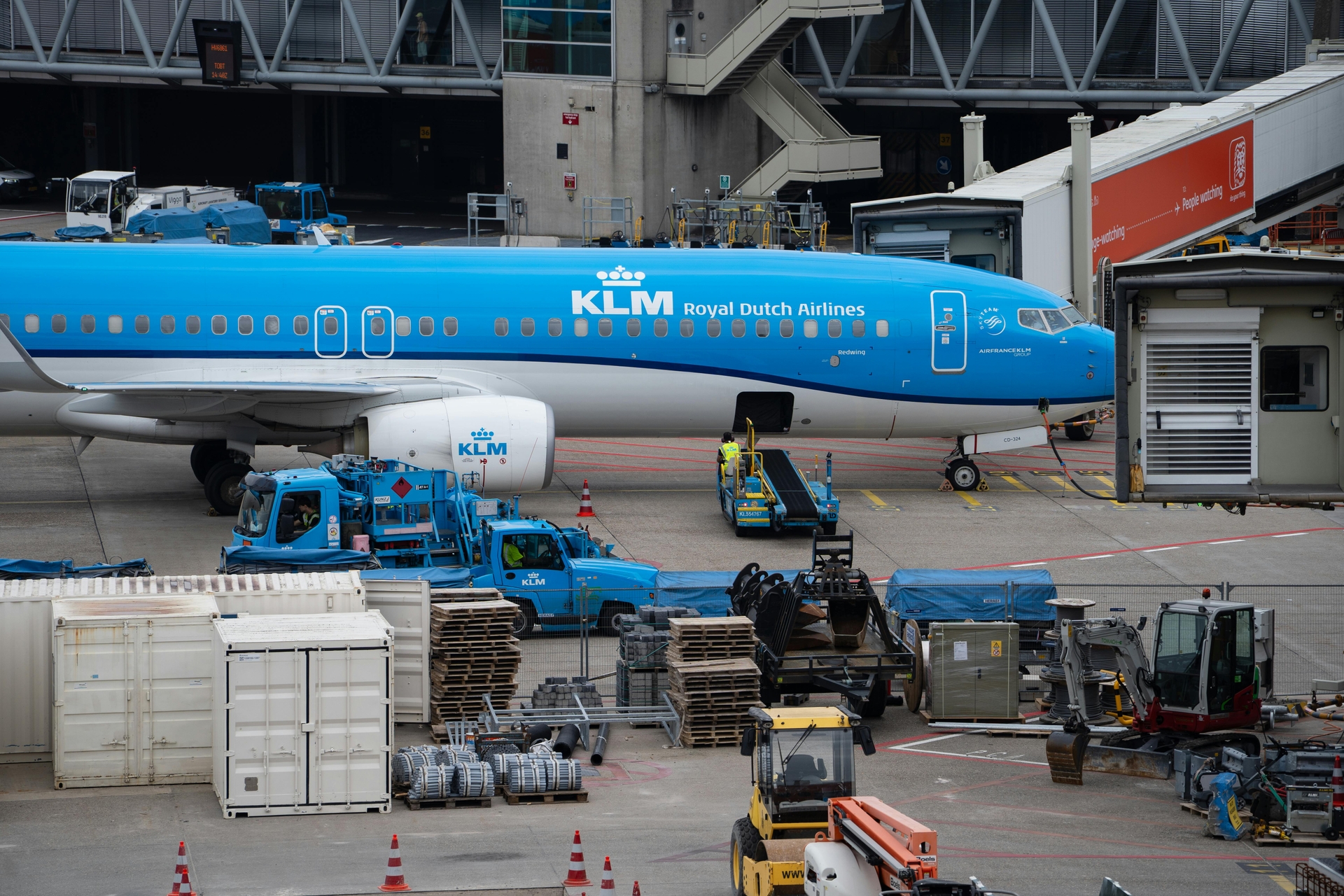
Smarter email, faster business.
How Big Data Analysis Can Uncover New Opportunities in Aviation Market Research
June 18, 2025
See how big data analysis is transforming aviation market research: Predicting demand with fresh insights and uncovering new retail opportunities across the industry.
The aviation industry, it seems, is always under siege. The attacks are relentless, and with the latest onslaught, OEMs, MROs, and airlines are facing supply chain backorders, political volatility, aggressive climate mandates, economic uncertainty, and tech-savvy travelers demanding personalized experiences. Industry leaders are being pushed to do more with less.
Amid this convergence of chaos, big data is proving vital. The findings it unlocks give aviation stakeholders the predictive power to navigate complexity, uncover emerging demands, and refine operations in ways that weren’t possible even a decade ago.
Airlines, airports, and manufacturers sit on vast piles of metrics: flight logs, maintenance records, booking behavior, weather patterns, even passenger meal preferences. With the right analytics strategy, these outputs can fuel smart, resilient decision-making across the entire aviation ecosystem.
What is big data analysis in aviation market research?
Big data analysis refers to the practice of examining large and complex datasets, real-time and historical, to reveal hidden patterns and insights hiding in plain sight, including correlations, market trends, and customer preferences. Without this approach, the data, with virtually limitless data points, would remain “dark” and underutilized if not wholly unusable.
In aviation market research, this includes metrics from flight tracking systems, online bookings, maintenance logs, loyalty programs, Internet of Things (IoT) sensors on aircraft, and even social media sentiment. In particular, airlines are using big data for process automation and price-optimization strategies AppInventiv).
Able to pull from historical and to-the-moment intelligence, airlines can confidently use predictive modeling to make future-facing decisions.
Beyond workflow automation and pricing, aviation big data analysis looks at:
- Operational data: Delays, fuel usage, crew efficiency
- Customer behavior: Search queries, booking paths, loyalty interactions
- Environmental data: Weather patterns, route efficiency, emissions impact
- Aircraft sensor data: Engine performance, vibrations, component wear
The scale is staggering. An Airbus A350 generates approximately 2.5 terabytes of data per day, much of which can be mined for powerful learnings using platforms like Skywise, a collaborative data-sharing platform built by Airbus to prevent parts failures and other issues before they occur.
Used strategically, big data is turning market research from static reporting into a discovery engine excavating new opportunities for innovation and revenue.
Current use cases revolutionizing the skies
Big data is driving tangible improvements across the aviation value chain. Here’s a more in-depth look at a few of the ways it’s being deployed:
1. Predictive maintenance
Predictive analytics is helping airlines reduce aircraft downtime by anticipating equipment failures before they happen. Airbus’s Skywise platform, for example, helped one airline detect a potential engine failure in its A330neo fleet weeks before the issue became critical, likely avoiding a catastrophic incident.
Using real-time sensor readings and historical maintenance logs can help fleet operators replace parts proactively rather than reactively, and time maintenance events for maximum impact and minimum disruption.
2. Dynamic pricing and revenue management
Algorithms can now churn through massive volumes of instant, on-demand data to adjust airfares based on demand elasticity, booking pace, competitor prices, weather forecasts, and even local events.
This level of process enhancement would be impossible without automated analytics engines parsing and learning from booking patterns across millions of customer journeys.
3. Route optimization and fuel savings
With escalating fuel prices and environmental pressure mounting, flight planning has increased in complexity. Beyond plotting a direct-distance course, big data tools evaluate atmospheric conditions, air traffic congestion, jet stream patterns, and alternate routing options to find the most fuel-efficient path.
According to Deloitte, this kind of data-driven process optimization is essential for aviation companies seeking to reduce costs and meet aggressive sustainability goals (Deloitte: Data-Driven Process Optimization in the Aviation Industry).
Predictive power in a volatile world
In a sector plagued by geopolitical disruptions, tariffs, labor shortages, and climate volatility, one constant remains: it’s better to be poised for a swift reaction or pivot than to wait, unprepared, for the hits to come.
Big data analytics gives aviation companies power over what they can control, with indicators to forecast maintenance needs, staffing requirements, and demand curves—while also reducing exposure to variables they can’t.
For example, airlines serving both leisure and business markets can use demand forecasting models to accurately predict which destinations will surge based on seasonal trends, economic indicators, and other consumer behaviors. This kind of modeling became especially valuable during COVID-19’s recovery period, when demand patterns shifted rapidly and traditional forecasting models broke down.
According to Deloitte’s “Facing Travel’s Future” report, travel companies that invest in AI and predictive analytics capitalize on demand shifts faster, redesigning offerings to meet evolving traveler expectations (Deloitte: Facing Travel’s Future: Key Forces Reshaping the Travel and Tourism Industry ).
The volatility will never end, but how the aviation industry navigates it can fundamentally change.
Beyond operations: Big data as a customer experience engine
Beyond saving time and money, big data is also about understanding people. For airlines, that means using passenger insights to tailor experiences that build loyalty and differentiate the brand.
By collecting and examining everything from seat selection patterns to in-flight purchases, airlines can personalize offerings down to the individual traveler. Did a frequent flyer recently start traveling with a child? Offer family boarding perks. Have they stopped ordering alcohol on flights? Swap the drink coupon for extra snacks.
According to Appinventiv, integrating customer analytics into the travel journey can drive tailored marketing campaigns, increase upsell opportunities, and support personalized onboard experiences, from preferred meals to entertainment options (AppInventiv).
Hyper-personalization is especially vital in luxury travel. Deloitte’s report on the evolving luxury travel market found that 85% of high-end travelers value working with travel advisers precisely because they offer personalized experiences (Deloitte: The Future of Luxury Travel: Five Trends Shaping the Market). Big data allows airlines and hospitality partners to replicate that concierge-style service at scale, but without needing an actual person behind every detail.
And as Gen Z and Millennial travelers overtake boomers as the primary growth segment, digital personalization will become table stakes, not a differentiator.
Market differentiation in a commoditized industry
In a hyper-competitive aviation market, where most aircraft look the same and routes are easily replicated, sophisticated trend analysis can be the defining edge.
Think of it this way: Any airline can fly from New York to London. But not every airline can fine-tune that flight route and MRO decisions for maximum fuel efficiency—offer a frictionless booking experience that dynamically adjusts prices and personalizes the travel journey based on individual customer behavior and preferences. That’s the differentiation that big data enables.
Process mining and operational analytics platforms like ePlaneAI can help airlines refine everything from parts acquisition to fleet utilization. For example, mapping interactions between procurement, operations, and customer feedback can reveal where cost savings are possible without eroding quality or service.
At the luxury end of the spectrum, ecosystem collaborations are also metrics-driven. Fashion houses, like Gucci, and hotel chains, like Accor, are increasingly using customer insights to inform product development, brand partnerships, and travel packages that reflect aspirational lifestyles.
In other words, whether you’re targeting budget-conscious flyers or ultra-premium passengers, market differentiation today is about truly knowing your customer and tailoring a killer, personalized experience.
Ethics, privacy, and the challenge of data governance
Aviation companies collect vast amounts of sensitive information—from travel histories and credit card details to real-time location and behavioral data. While this opens doors for innovation, it also raises serious ethical and regulatory concerns.
Companies must navigate a complex global web of data protection laws, including the EU’s General Data Protection Regulation (GDPR) and California’s Consumer Privacy Act (CCPA). Any breach can result not only in steep financial penalties but also long-term reputational damage. Companies that fail to adapt their data governance strategies to new frameworks risk “diminishing customer base[s] and missed opportunities for growth.”
Beyond compliance, trust is a business asset. Passengers are increasingly aware of how their personal information is used, and more likely to book with brands they feel respect their privacy.
According to Deloitte’s Future of the Consumer report, transparency, consent, and data minimization are becoming non-negotiable elements of a trustworthy brand experience.
Legacy systems remain the biggest challenge, though. Many airlines rely on outdated infrastructure that makes continuous data governance difficult. Bridging these gaps will be essential as AI and other automation evolve.
What the future holds: From AI to autonomous decision-making
The next frontier for aviation data involves gathering all available insights, historical and real-time, and successfully using them for optimal decisions without human intervention. AI, machine learning, and autonomous systems are transforming how airlines forecast demand, reroute flights, spot disruptions, woo customers, and even avoid catastrophes.
Looking forward, AI will play an even larger role in everything from flight operations to crew scheduling. Predictive tools will give way to prescriptive systems, with AI that can suggest actions and then automatically act upon them, within predefined ethical and operational guardrails.
Yet as automation scales, human oversight must evolve with it. The goal is not to replace judgment but to augment it, so that flight crews, maintenance teams, and executives are supported by the best information available, at the speed of modern aviation.
Seizing the skies: Turning insight into action
Big data analysis in market research is becoming the undersung hero in aviation operations. In a sector industry defined by razor-thin margins and volatile cost and demand, the ability to harness information at scale can mean the difference between market dominance and obsolescence.
The aviation sector’s future will be defined by agility. Aviation companies that can adapt in real time, whether by shifting fleet allocations, adjusting pricing strategies, or updating marketing campaigns, will thrive. This kind of responsiveness demands data and data structure, data strategy, and scalable AI-powered systems.
That’s where solutions like ePlaneAI come in. The platform is built to help aviation leaders extract signals from the noise. From forecasting emerging travel corridors to reducing maintenance downtime, ePlaneAI connects the dots between disparate sources for smart, actionable takeaways.
ePlaneAI gives a dashboard that can work with you to build a data-driven, responsive aviation business that can swerve and pivot to outmaneuver whatever turbulence lies ahead.
Ready to soar smarter? Let ePlaneAI help you take flight with real-time market intelligence, AI-driven predictions, and unmatched aviation expertise. Book a demo to see how you can unlock new opportunities in aviation market research—before your competitors do.
Aviation Maintenance Trends That May Gain Momentum in Uncertain Circumstances
Aircraft are staying in service longer, supply chains are a powder keg, and the tech is evolving overnight. Discover the maintenance trends gaining momentum and what they mean for operators trying to stay airborne and profitable.

August 27, 2025
How to Use AeroGenie to Streamline Procurement Reporting in Aviation
What makes AI tools understand human language? It’s not magic—it’s NLP. Learn how NLP works, where it's going, and how it's changing the way we query and build reports with AI.

August 25, 2025
What Is Parts Manufacturer Approval (PMA) and Why Is It Important in Aviation?
PMA parts are transforming aviation—cutting costs, improving performance, and reducing downtime. Learn why FAA-approved PMA components are becoming a go-to choice for airlines, MROs, and OEMs alike.

August 22, 2025
How to Manage Your Aircraft Maintenance Team With Schedule AI
Tired of manual maintenance scheduling headaches? Meet Schedule AI. See how Schedule AI is transforming aircraft operations, helping your team optimize tasks and drastically cut down turnaround times. Keep your fleet in the air and on schedule.
